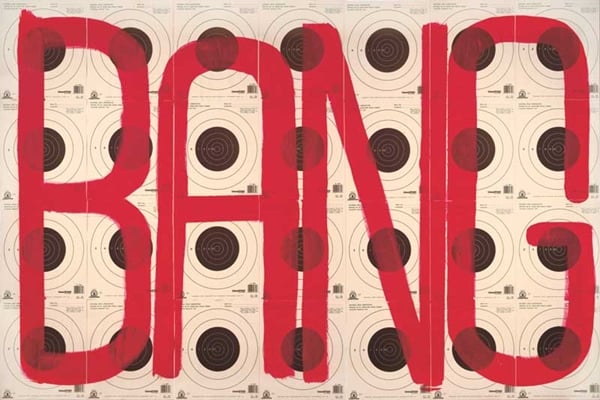
Photo: Courtesy KM Fine Arts, Los Angeles, Chicago.
Eric Shiner
Stay Put
The Andy Warhol Museum has signed a deal to open a satellite museum in a new Lower East Side real estate development. The Andy annex, at 10,000 sq. ft., will be about the size of two floors of the Whitney.
As reported by the Pittsburgh Post-Gazette, the plans are for the site to sometimes exhibit Warhol materials currently in storage, as the vast majority of the museum’s collection is not on view in Pittsburgh.
Financially, perhaps, it may be a smart deal for the institution. Developers have agreed to cover the first five years of losses, should there be any, in exchange for the museum serving as a magnet to the neighborhood.
Conceptually, logistically and even perhaps morally, this may not be a good idea for the museum.
At the museum opening 20 years ago this month, there was much joking and laughing among Warhol’s Factory contemporaries about the fact that the artist would not have wanted the institution headquartered in his hometown. By all accounts, he left it as soon as possible. That said, the minute you walk into the church where Warhol and his mother worshipped, the St. John Chrysostom Byzantine Catholic Church, you understand everything. There was a direct art-historical line from the heavily ornamented images of Saints in the church to his golden Marilyn tondo and the artworks which were to follow. And I remember well at the opening, it meant a lot to Pittsburgh, depressed by the end of the Steel town era, to have that museum.
Probably still does.
The Annex/satellite/mini whatever you want to call it museum risks splitting the Warhol’s mission and commitment. And it risks splitting gifted director Eric Shiner’s time even more. Its not like you don’t already see the affable head on the artworld circuit enough as it is. (Do we need a Krens Lite?)
There’s also the risk that the expansion into New York city will turn the museum’s colleagues there into competitors and that will have an impact on the exhibition of Warhol art.
The expansion pulls New York art lovers literally into all different directions. The Whitney Downtown, the MoMA, the Brooklyn Museum, the Guggenheim, the Met, are all wanting a fatter footprint in contemporary art. And the traffic and revenues it brings.
The Warhol’s ambitions dovetail curiously with the explosion of the satellite art fair in recent years.
Collectors going to Miami for Art Basel are now invited to so many events and satellites spread out all over the region that they feel in transit instead of impressed. That’s not desirable. More—even more masterpieces—isnt always better.
There used to be something elegant and achievable in New York’s Museum Mile. Not anymore.
Andy Warhol, Life Savers, from Ads (F. & S. 353) (1985).
Photo: Courtesy Revolver Gallery.
Canvas in the Wind
You learn all you need to know about him from the prefix of his email address: BDCowboy. That stands for Brown Dirt Cowboy, as in “Captain Fantastic and the…”, title of the 1975 Elton John platinum-selling album that launched the singer and his lyricist, Bernie Taupin, into the stratosphere. Taupin, who uses the handle to this day, is known for such songs as “Rocket Man,” “Don’t Let the Sun Go Down on Me,” “Daniel,” “Your Song,” “Someone Saved My Life Tonight,” and the entirety of the 1973 “Goodbye Yellow Brick Road” album. He has also written lyrics for Alice Cooper, among other artists.
Today, like a surprisingly long list of very successful musicians—Michael Stipe, David Byrne, Courtney Love, Swizz Beatz, Ronnie Wood and Patti Smith among them— Taupin has turned to painting. Actually, Taupin said he’s been painting seriously for several years now, but he wishes he had started when he was 25. “I got seduced into going on the road with a rock n’ roll band,” he explains, somewhat mournfully.
Repped by KM Fine Arts in Los Angeles and Chicago, the gallery recently showed his paintings at their booth at the Downtown Art Fair in New York. He was a magnet to the booth, posing for pictures sporting a pork pie hat and massive humility. He doesn’t talk to many other visual artists, he quickly confessed, because “I’m intimidated by them.”
Painting brightly colored abstracts sometimes dotted with text, Taupin says he’s been particularly influenced by Anselm Kiefer. At the Fair where he showed earlier this month, he stood in front of one painting, Scar, a slashed canvas that he had painstakingly sewn back together, and the laced rope echoed some of Kiefer’s earthy three-dimensional materials.
Taupin doesn’t know how much his dealer charges for his art and doesn’t want to know, he said, but he uses the money to buy new canvases.
The lyricist noted that the art and music worlds are surprisingly similar, and offered a playlist for the music that’s great to paint to: “Blues and jazz, John Coltrane, George Jones . . . and ‘Hot Fives and Sevens,’ Louis Armstrong,” he says, adding “always vinyl.”
Bernie Taupin, Bang (2013).
Photo: Courtesy KM Fine Arts, Los Angeles, Chicago.
Art World Report Card appears every Thursday. The author can be reached at apeers@artnet.com and writes on the art world on Twitter @LoisLaneNY.